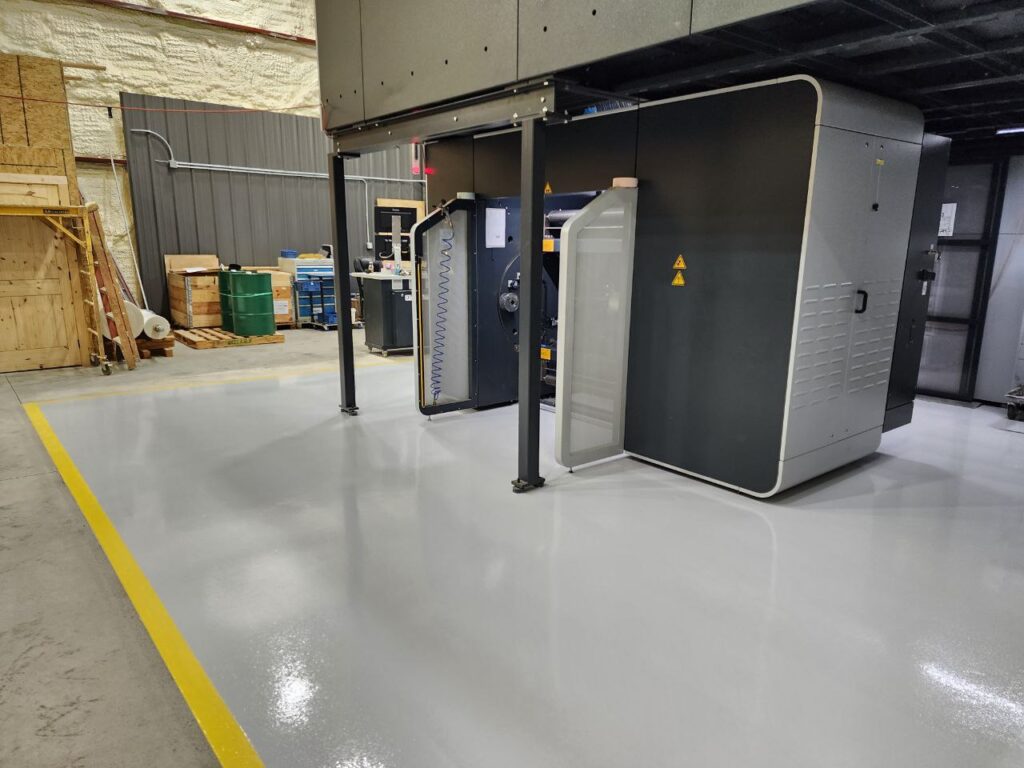Request a quote!
Line Stripping
In various industries, the process of line strip-ping plays a crucial role in enhancing efficiency, safety, and aesthetics. Line strip-ping, also known as line marking or striping, involves the application of visible lines on surfaces such as roads, parking lots, warehouses, and sports facilities. This seemingly simple task requires a combination of precision, advanced techniques, and the right materials to achieve optimal results. In this article, we delve into the art and science of line stripp-ing, exploring its significance, methods, and the impact it has on different sectors.
Importance of Line-Strip-ping:
Traffic Management: Line-stripping on roads is essential for managing traffic flow and ensuring road safety. Clear and visible road markings guide drivers, define lanes, and communicate important information such as pedestrian crossings, stop lines, and turning lanes. Well-marked roads contribute significantly to preventing accidents and maintaining orderly traffic.
Parking Lot Organization: Parking lots rely on effective line stripping to organize and maximize parking space. Clearly marked parking spaces, directional arrows, and handicap zones contribute to efficient traffic circulation, prevent congestion, and enhance overall safety for both drivers and pedestrians.
Safety in Warehouses and Industrial Facilities: In industrial settings, line-stripping is used to demarcate specific areas for various purposes, such as pedestrian walkways, loading zones, and storage areas. Clearly defined lines contribute to the prevention of accidents, efficient material handling, and adherence to safety regulations.
Sports Facilities: Line-stripping is crucial in sports arenas and playing fields to mark boundaries, goal lines, and other essential elements. Properly marked surfaces not only contribute to fair play but also enhance the visual appeal of the facility.
Methods of Line-Stripping:
Paint Striping: Traditional line-stripping often involves the use of paint, which can be applied using handheld or machine-operated striping equipment. This method is suitable for various surfaces, including asphalt and concrete.
Thermoplastic Striping: Thermoplastic materials, which are heated and applied as a liquid, have gained popularity for their durability and longevity. Thermoplastic striping is commonly used in high-traffic areas due to its resistance to wear and weather conditions.
Reflective Striping: Reflective striping is designed to improve visibility during low-light conditions. This method is often used on roads, parking lots, and pathways, enhancing safety for drivers and pedestrians.
Stencil and Pre-formed Markings: Stencils and pre-formed markings allow for precise and consistent line-stripping. This method is frequently used for creating intricate designs, logos, or specialized markings.
Line-stripping may seem like a straightforward task, but its impact on safety, efficiency, and aesthetics cannot be overstated. Whether it’s on roads, parking lots, or sports facilities, the art and science of lines stripping continue to evolve with innovative materials and application methods. As industries strive for enhanced functionality and safety, the importance of quality lines stripping remains a constant in our ever-evolving urban landscape.
Advancements in technology and materials are continually improving the effectiveness and durability of line-stripping. For instance, the development of environmentally friendly paints and coatings is making the process more sustainable. Additionally, automated striping machines equipped with GPS and laser guidance systems are enhancing precision and reducing human error. These innovations ensure that line stripping will continue to play a vital role in maintaining safe and efficient environments across various sectors.
Investing in professional line stripping services ensures that the markings meet regulatory standards and provide maximum benefits. From traffic management to sports facility aesthetics, the expertise of skilled technicians and the use of high-quality materials can make a significant difference. As cities grow and industrial activities expand, the need for clear, durable, and effective line stripping will only increase, highlighting its essential role in modern infrastructure.



